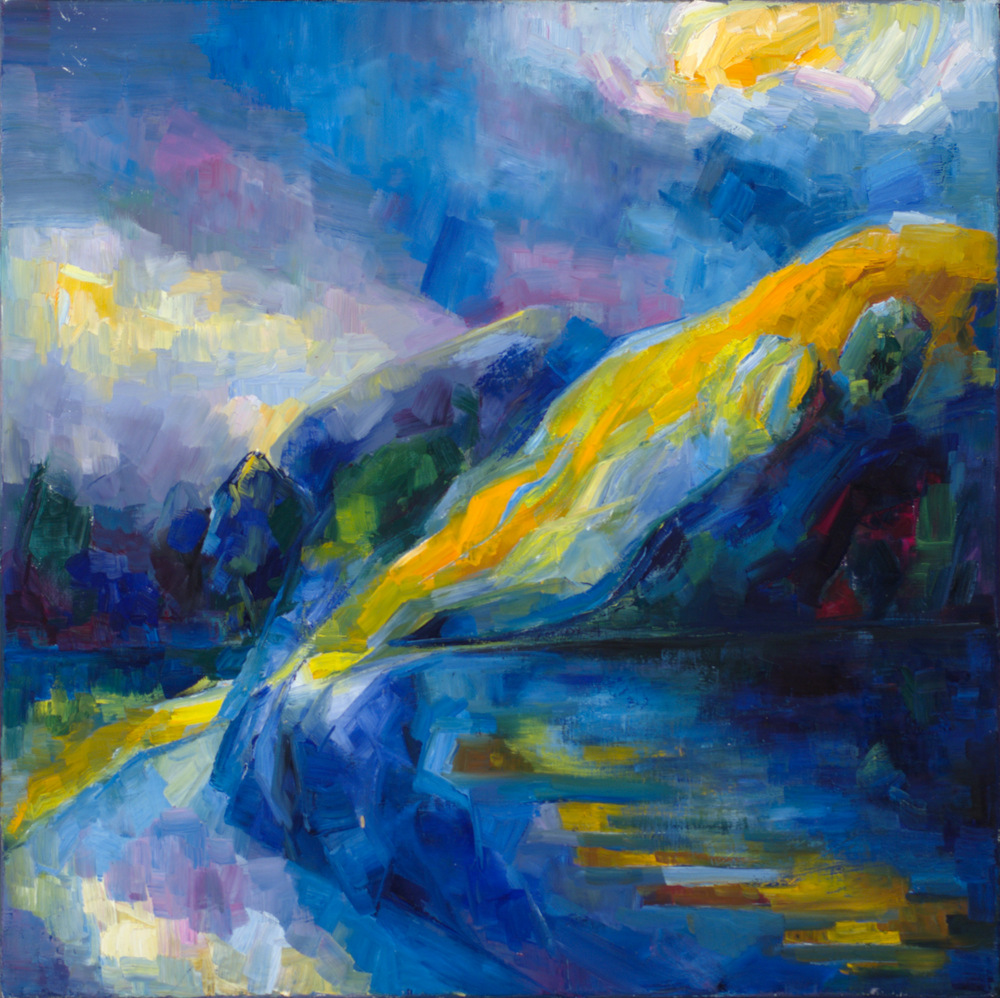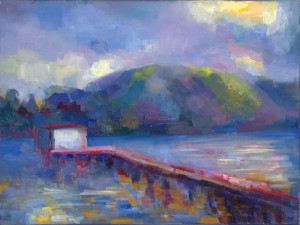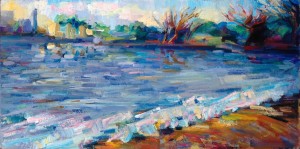
Lena Levin. Sonnet 33: Heavenly Alchemy. 20″x20″. Oil on linen. 2012
William Shakespeare. Sonnet 33
Full many a glorious morning have I seen
Flatter the mountain-tops with sovereign eye,
Kissing with golden face the meadows green,
Gilding pale streams with heavenly alchemy;Anon permit the basest clouds to ride
With ugly rack on his celestial face,
And from the forlorn world his visage hide,
Stealing unseen to west with this disgrace:Even so my sun one early morn did shine
With all triumphant splendor on my brow;
But out, alack! he was but one hour mine,
The region cloud hath masked him from me now.Yet him for this my love no whit disdaineth;
Suns of the world may stain when heaven’s sun staineth.
Adetomiwa Edun reading this sonnet
This sonnet opens a very direct and straightforward way of translation into painting, because it “pretends” to be just a landscape over the first two quatrains. The landscape appears first not as a metaphor, but just as a landscape, albeit described in somewhat heavenly and anthropomorphic language; only in the third quatrain, the metaphor is reversed, so the landscape turns out to be a strategy of dealing with human emotions.

Lena Levin. Tomales Bay: sunrise effects. 18″x24″, oil on linen. 2012

Lena Levin. Alameda: Rain and Sun. 24″x12″. Oil on canvas panel. 2011.
To be more precise, there are two landscapes here, or a single one under different lighting conditions. This ease in combining two or more temporal planes in a poem is often a challenge for a painting translation, but it was easier here: as a plein air painter working in Northern California, I am quite accustomed to painting changing lighting conditions within a single picture frame (and a single plein air session). I include here two paintings from such plein air sessions, which served as the most direct visual anchors for this sonnet painting.
But I knew, from the very beginning, that just a landscape with mixed lighting conditions wouldn’t be enough here. The painting would have to combine a representation of a morning, both sunny and cloudy at the same time, with a decidedly non-representational curvy movement of blues across the painting, a soul in pain of forlorn love.
Working on the landscape itself, I lost the blue curve for a while, and even decided, at one point, that it was a mistaken illusion of my preliminary vision. And yet I couldn’t complete the painting before the “abstract” movement of blues from the bottom of the picture plane towards the sky re-appeared.